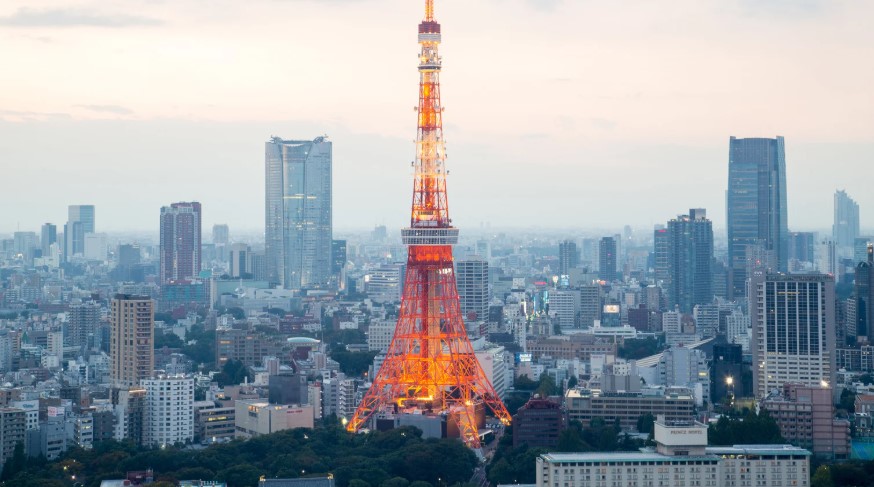“Japan doesn’t just have four seasons — it has four personalities. Each one feels like a different country with its own rhythm, mood, and magic.” – Kojo
Spring (March to May): Cherry Blossoms & Crisp Weather
If you’re dreaming of sakura season, late March to early April is your window. This is hands down the most famous and photographed time to visit Japan — and for good reason. Parks and riversides explode in soft pink blooms, and locals celebrate with hanami (flower viewing) picnics under the trees.
But it’s not just about the blossoms. The weather in spring is crisp and refreshing, with temperatures ranging from 10–20°C (50–68°F). You’ll need a light jacket but nothing too heavy.
- Best places for cherry blossoms: Kyoto’s Philosopher’s Path, Ueno Park in Tokyo, Himeji Castle
- Popular festivals: Hanami (nationwide), Takayama Spring Festival, Fuji Shibazakura Festival
- Tips: Book accommodations early — this is peak season and prices can double.
Summer (June to August): Festivals, Fireworks & Lush Landscapes
Let’s be real — Japanese summer is hot and humid. But it’s also one of the most vibrant times of year. If you can handle the heat (and pack light clothing), summer rewards you with high-energy matsuri (festivals), jaw-dropping fireworks, and mountains that are at their greenest.
June brings the rainy season, especially in central and southern Japan, but it’s not constant. July and August can feel like a sauna in the cities, but that’s when traditional festivals light up the nights — and the food stalls, yukata, and taiko drums are unforgettable.
- Don’t miss: Gion Matsuri (Kyoto), Tenjin Matsuri (Osaka), Sumidagawa Fireworks (Tokyo)
- Best for: Hiking in the Japanese Alps, climbing Mt. Fuji (July–early September), Tohoku region’s cooler retreats
- Tips: Bring a folding fan, stay hydrated, and don’t skip the summer street food scene!
Autumn (September to November): Fiery Foliage & Fewer Crowds
If spring gets all the fame, autumn is Japan’s best-kept secret. The weather cools down, humidity fades, and the mountains begin to glow in brilliant reds, oranges, and golds. Fall foliage (called “koyo”) rivals cherry blossoms in beauty — and often comes with smaller crowds and lower prices.
I’ve found this to be the perfect time for travelers who want scenery, culture, and comfort. The food gets better too — think roasted sweet potatoes, matsutake mushrooms, and warm bowls of udon under colored leaves.
- Top foliage spots: Nikko, Arashiyama (Kyoto), Nara, Kamikochi
- Weather: 15–25°C (59–77°F), cool mornings, perfect afternoons
- Tips: Plan for mid to late November for peak colors in most major cities. Earlier for the north.
Winter (December to February): Snow, Onsen & Festive Light Displays
Winter in Japan is more than snow — it’s serenity. It’s soaking in an open-air onsen while snowflakes fall, watching monkeys warm up in hot springs, and sipping hot sake after skiing down a powder-soft slope. And yes — it’s the best time to visit if you love snow sports, low crowds, and holiday lights.
Hokkaido and the Japanese Alps offer world-class skiing, while places like Nagano and Yamagata give you those magical rural winter vibes. Tokyo and Kyoto don’t get much snow, but they still get crisp air, illuminations, and seasonal charm.
- Best winter destinations: Niseko, Hakuba, Sapporo, Ginzan Onsen
- Festivals: Sapporo Snow Festival, Yokote Kamakura Festival, Nabana no Sato Illumination
- Tips: Hotels are cheaper (except during New Year’s), and this is the best time to experience quiet temple visits.
Best Time by Travel Priority
- For cherry blossoms: Late March to early April
- For fall colors: Late October to late November
- For festivals: July and August
- For snow and skiing: January and February
- For low crowds and lower prices: Late autumn and February
- For best weather overall: April–May and October–November
My Take: It Depends on the Japan You Want
If you’re after postcard-perfect cherry blossoms, you’ll be fighting crowds and high prices — but the experience is unforgettable. If you want peaceful walks, cozy inns, and budget-friendliness, winter is your best bet. And if you love color, energy, and community spirit, summer festivals will blow your mind.
For me, the sweet spot is **late November**. You get golden temples framed by fiery trees, perfect walking weather, and quiet moments that feel like Japan is letting you in on a secret.
No matter when you visit, Japan will welcome you with grace, flavor, and quiet brilliance. Just know what you’re looking for — and let the seasons guide you there.










Leave a Comment